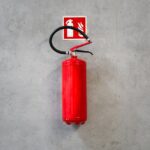Why Should Paper Be Recycled?
Recycling our paper waste is crucial as it diverts the waste away from landfill sites. When recyclable products are sent to landfill sites, they can cause serious damage to the environment not just around the landfill but globally too.
When paper is put in a landfill, it is compressed over time by waste weight. As it is compressed, it breaks down anaerobically (without oxygen). This anaerobic breakdown results in the release of methane gas. Methane is the most common greenhouse gas, and is responsible for global warming. The gas damages the Ozone layer which causes the earth to heat up.
In addition, overfilled landfill sites can cause pollution and contamination issues, on a local level and globally. Hazardous chemicals can leak out of the landfill and into nearby waterways. These waterways are then contaminated and can cause serious damage to agriculture and to organisms that benefit from the water system, including humans.
How is Paper Waste Recycled?
In the UK, paper waste is collected either via your local authority waste company, or with a private entity that deals with business waste removal. Paper waste collected via the local authority can be collected from two different bin types. White paper is collected with glass, while colouored and brown paper is collected with typical recyclables such as tin cans and plastic packaging.
Paper waste is collected from homes or businesses, and then returned to a local licensed recycling facility. When it arrives, the paper is often

sorted through manually to remove any non-paper waste, and then bundled into bales. For most private business waste collectors, including Collect and Recycle, paper is required to be baled prior to collection. This allows for the waste to be transported with ease, and means that collection companies can take more waste in one pick up.
After the paper is sorted and baled, it is then taken to a licensed treatment facility. The paper is then unbaled and de-inked. De-inking ensures that when the paper is treated, it is not contaminated with ink waste, which is a form of hazardous waste.
The paper is shredded down and mixed with water. Mixing these two components creates a pulp. The pulp is transferred to a centrifugal separation machine to remove all final foreign objects. This includes staples, tape, and plastic.
When the pulp is clear of other waste forms, it is spread out thinly to remove water. The product is left to dry, which is when it begins to form into new paper. The paper is wound up into large reels and distributed back out into the world for re-use.
Collect and Recycle

Collect and Recycle provide a reliable and efficient paper waste management service across the UK. For businesses with excess paper waste taking up valuable space, Collect and Recycle have the perfect solution.
We understand the importance of transparency. That’s why we offer full log reports, so your business can know exactly how your paper waste is being recycled sustainably and ethically.
We provide a flexible range of collection schedules; weekly, bi-weekly, or ad hoc.
Our service fits your schedule and needs.
If you wish to find out more about our paper waste collection and treatment service, get in touch today.


